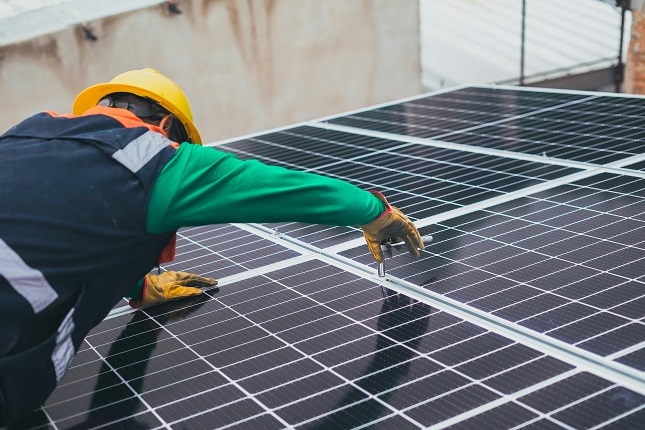Over the last few years, the demand for solar panels has shot up, helped along by the frequent sensitization on sustainable energy resources. Among its benefits are shunning the use of rare fossil fuels, affordability in electricity, and cutting of carbon. Nevertheless, with the excessive use of solar panels like other technological devices, the environment has been saddled with another environmental predicament revolving around disposal of used solar devices. Most of the electronic consumables are developed from harmful materials that are hazardous to the environment. Slipshod methods of dumping have exacerbated the disposal challenge and posed a risk to the underground water and soil at the same time through toxic leakage that often occurs over a long period. Reason enough why understanding solar panel composition and its lifecycle is very important is that it encloses: civilizing efficient recycling of solar panel
Understanding Solar Panel Composition and Lifecycle
Understandably, the knowledge of the composition and lifecycle of a solar panel is crucial in solar panel recycling. Solar panels have tempered glass, aluminum frames, silicon cells, and plastics. While these materials play a huge role in making the solar panel strong, disposing of most of them is challenging. Admittedly, the average solar panel is expected to last around 25-30 years. Yet, with technology advancing on a daily basis, some of them become irrelevant even before the lapse of the timeframe as recommended. Considering the many solar panels in use and use, disposal methods need to be selective.
How Solar Panels are Prepared for Recycling
Firstly, before the panels can be taken for recycling, the panels are examined for any damage and wear and tear as it could impact the recycling. A panel that has been damaged may either require special handling or be treated differently due to the risks it poses . Secondly, solar panels are disconnected from electric systems to eliminate the risk of electric shock while being transported and some recycled. Safe disabling of the panels will protect the workers as well as the environment. Lastly, a solar panel should be ferried to a recycling partner who will dispose of them properly. Proper care should be taken while transporting the panels to avoid any damage that could pose environmental hazards or affect the recycling process.
The Solar Panel Recycling Process
Once the solar panels are transported to the recycling frontend facility, they undergo a complex process. The first stage commonly involves a mechanical crushing where the panels are broken into small pieces. The small components will then be processed to separate the glass, silicon and metal. During the chemical bath processes, the glass, silicon and metal are separated. Steel belts carry out this process while the glass is extracted and used for extra silicon. The glass is then cleaned and sent back for recycling or other glass products.
The Importance and Benefits of Solar Panel Recycling
Solar panel recycling is advantageous in many aspects; it would have the double benefit of reducing the amount of carbon going into fresh panels and recycling when recognized valuable materials from utilized panels further diminish the amount of resources. This equals much less mass carbon in the hood needed.
Used or second-hand solar panels produce way less carbon overall than new ones since solar panel recycling will be a critical aspect of the recycling sector in emerging countries. The feature of panels assembled by competent workers and the necessary facilities to assemble stuff will be reimbursing work to collect, connect, and recover stuff would be a valuable economic stimulus locally. And it will also establish the path for a sustainable growth ecosystem by offering occupation in the fresh sector. And most significantly, it is vital for long-term sustainability for solar solar panel recycling.
The mining and extraction sector for solar panels and materials and construction will increase in area as well as in facilities. Before we recycle this raw material, we need to keep it in use as much as feasible. While several procedures continue at the end of the landfill, it is becoming more severe. Therefore, we will reclaim as much of this stuff and recycle it so that we may utilize it again in other applications.
Selecting the Right Solar Panel Recycling Company
People must make sure they choose the correct solar panel recycling partner. A few reasons why people should carefully choose their recycling firms include. First, a good solar panel recycling ‘house’ would be aware of what’s the best way to separate the mercury from a device and will do so to your safety and health concern. Another crucial aspect is the credentialing and compliant state of the recycling team. For instance, recycling ISO 14001-related entities would be indicated for ensuring that solar panels are recycled in compliance with existing law and environmental rules.
Therefore, recycling solar panels is a preferable method of disposal to landfill since landfilling has severe everlasting damage to the environment. Since the panels are not degradable, disposal of the panels in landfills is a threat to human health, and leakage of harmful heavy metals and other substances are a danger to the ecosystem. This implies that the only way to prevent irreversible risks is to recycle the panels to ensure minimal harm to human health and the environment. Even as installing recycling infrastructure and processes impose significant costs to individual countries, the cost of inaction is even higher. Improving the environment will lead to irreversible damage, which becomes expensive to clean up, and hence present investment in recycling is more beneficial.
Conclusion
Therefore, with the increased demand for solar panels, there is a need for proper disposal and recycling. Solar panel recycling will reduce carbon emissions, conserve natural resources, and create more jobs in a low-carbon economy. Individuals and corporate bodies should not dump their solar panels into the landfills and should begin collecting enough of them and then take them to the best solar panel recycling companies for the separation of valuable components. Therefore, as it can be observed recycling solar panels continues to have a new trend in years to come by 2024 and beyond, and there is a democratizing ethos for a cleaner planet. We will reduce emissions by reusability, allowing us to tackle climate change.









































